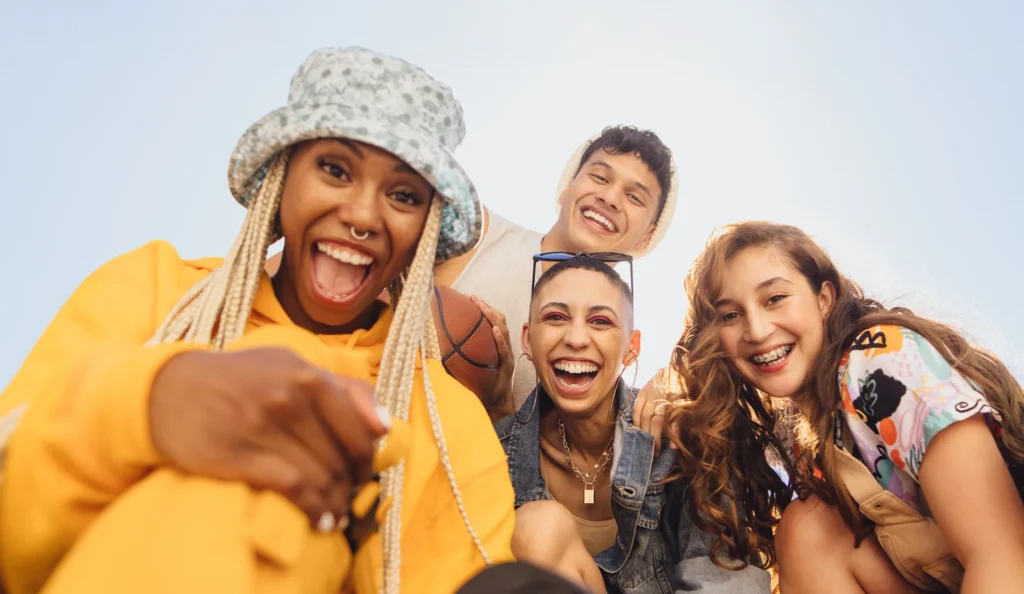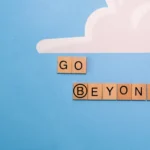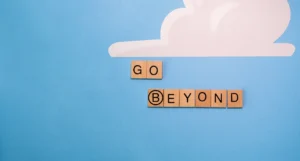Here’s our guide to developing the best brand partnerships ever and how they can be harnessed to boost customer loyalty and love for your brand.
In this article, we’ll explore what brand partnerships are, how to design and implement brilliant partnerships for maximum impact and take a look at some of the very best brand partnership examples out there right now.
Brand Partnerships 101 Worksheet
Everything you need to develop an unmissable brand partnership your customers will love in one handy bite-sized document.
What are Brand Partnerships?
Brand partnerships are a strategic relationship in which two or more organisations work together as partners, to achieve mutually beneficial outcomes, fuelled by a strong belief that brands can achieve more for less, by working together.
The Collins Dictionary defines a partnership as “a relationship in which two or more people, organizations, or countries work together as partners”.
But my colleagues and I at Mando-Connect think of brand partnerships as so much more than this. We know that it’s significantly more exciting, interesting and complex than just “working together as partners”…
Our Definition of Brand Partnerships:
Brand partnerships are about collaborative effort and collaborative results.
It’s about…
- Achieving more together than by going it alone.
- Identifying mutually beneficial objectives and opportunities, then achieving them together.
- Sharing, pooling resources, skills sets and capabilities.
- Building ideas, propositions and campaigns together.
- A marketing discipline, a process, a skill set and an output.
And we think they’re brilliant!
Forging brand partnerships is one of the most exciting marketing disciplines out there – after all, who wouldn’t want to achieve more for less by working with others?
Collaboration is a basic human principle; it’s how the world works best. People are happier, more productive and effective when they collaborate with others, and that same insight applies to brands too.
Yet brand partnerships is an overlooked and under-utilised marketing specialism.
Companies naturally look inward at their own brand and capabilities, to their own marketing campaigns and strategies that work in silos. But how wonderful would it be for the world, if, rather than looking at their own challenges, brands looked up and looked out? Identified real consumer-led opportunities and challenges and worked together to solve them.
But don’t take my word for it.
One of the Marketing Greats, the fabulous Rory Sutherland from Ogilvy, is a fan too…

“Why wouldn’t you make partnerships the first question you ask?
It’s obvious when you think about it. Before you ask ‘What can we pay for or do that costs money?’ you should ask ‘what symbiotic relationships can we forge?’
It is marketing at its most zen.”
Using Brand Partnerships to Create Unshakeable Loyalty
Harnessing brand partnerships to drive up loyalty among consumers is one of the hottest topics among marketers today.
Nearly every loyalty and reward programme across Europe is currently exploring how they can activate an effective brand partnerships strategy.
That’s based on the common understanding that, by collaborating with another brand and sharing your resources, knowledge and capabilities, you can create something much bigger and better than you ever could working alone.
Thus, your loyalty efforts will become far more attractive to customers and achieve more.
Plus, at the same time, you can spend far less doing it!
Loyalty marketers across the continent are wrestling with big questions such as:
- What types of brand partnerships and rewards should I consider?
- What objectives can brand partnerships help me achieve?
- Which types of brand partners should I be working with?
- Who are the right brand partners for my members?
- How many brand partners should I work with?
- How do I approach brand partners and build an effective partnership?
- What are the risks and challenges and how do I manage them?
So How Can Partnerships Create Loyalty?
Brand Partnerships is a broad marketing discipline that applies and acts across multiple specialisms. And that, of course, includes Loyalty Marketing.
But it’s important to note that, by Loyalty Marketing we aren’t just talking about points programmes.
We’re talking about all kinds of loyalty, reward, membership and customer engagement initiatives.
In fact, any programme that has been designed to recognise and reward customers and build long term loyalty and commitment to the brand.

At Mando-Connect we are big fans of the Loyalty Academy – a globally recognised educational body for loyalty professionals.
In fact, I’m both a Certified Loyalty Marketing Professional (CLMP) and a teaching member of the faculty.
Brand partnerships form such a big part of the loyalty marketing ecosystem, that we’ve even created a course to cover the subject.
You can find out more here.
The Benefits of Brand Partnerships
There are so many benefits to leveraging brand partnerships in loyalty and customer engagement. Here are my top 10 benefits of Brand Partnerships, when trying to drive loyalty in particular:
- Achieve bigger, better results, by working together than you could going it alone.
- Spend less by sharing resources, budgets, insights and capabilities for mutual gain.
- Get access to new audiences by working with brands that already have meaningful relationships with the customers and members you want.
- Better engage your own customers and members, by working with partners who can offer rewards that they really want, from brands they love.
- Create new stories and moments to share with your members, that you couldn’t credibly create if you were working alone.
- Be included in moments and channels outside of your own ecosystem, increasing reach, building awareness, growing consideration and driving conversion to your brand.
- Unlock new customer, brand, sector and loyalty data and insights that you can use to improve your own programme.
- Borrow brand love and increase your own appeal, by working with brands that your audience already adore.
- Build your network by working smarter with the partners of your partners, rather than making cold approaches.
- Be inspired, expand your thinking and see what you can learn from brand partners. You’ll be amazed at what you can achieve!
The Challenges of Brand Partnerships
As with all things, it’s also very important to think about, recognise, address and overcome the challenges that can arise.
Here are the 5 biggest challenges we encounter in developing brand partnerships in loyalty marketing, with top tips for how to overcome them.
1. Making the right brand partner choices
Top Tip: Take a strategic approach to partner selection.
Before you even start thinking about the who, think about the why, determine what is the mutually beneficial opportunity for your programme and the potential partner? What are the objectives you both seek to achieve?
And then, once you have the objectives nailed down, consider brand alignment, audience fit, programme parameters, legal, commercial and operational constraints.
What do you need from the partner? What do they need from you? And how will it work? Should all be questions asked and answered before making your brand partner choices.
The Challenge: Selecting the right brand partner for your loyalty programme is one of the hardest things to get right.
2. Working together, forming a successful collaborative team
Top Tip: Understand that brand partnerships is about a mutually beneficial opportunity achieved together. It’s about relationships as much as outcomes. And in order to be successful you genuinely need to work together.
To set yourselves up for success ensure mutual objectives, sign off processes, outcomes and timelines upfront, that all parties can adhere to.
The Challenge: We’ve all heard the expression “too many cooks” and brand partnerships can suffer from this problem – as you add in more stakeholders to your processes and decisions it can get complicated very quickly.
3. Complex Co-creation
Top Tip: Ensure that the practicalities such as brand guidelines, technical and creative parameters and ways of working are part of the up-front conversation and strategic development of the brand partnership. This should help you avoid sticky situations in the implementation phase.
The Challenge: Loyalty marketers are very experienced at developing their own propositions and campaigns, but co-creating a campaign with a brand partner can yield a very different set of challenges (as well as opportunities). Particularly in the space of creative co-creation – how do you blend your creative identities to create a single proposition? Where do the logos go? How do sign-offs work?
4. Confidentiality and security
Top Tip: Ensure that you work with an expert legal team and build in privacy, security and confidentiality clauses into a robust and mutually agreed partner agreement.
As well as confidentiality and security, this agreement should also scope, processes, roles and responsibilities and commercial and contractual terms (including factors such as indemnity, liability and payment terms).
The Challenge: A partnership can often mean that loyalty initiatives need to share sensitive or private information, assets or processes with a partner, or even partners.
5. Ensuring quality of delivery
Top Tip: By its very nature, brand partnerships require trust and mutual respect.
Choose your partners carefully, check their reputation and past performance and, above all else, ensure that robust testing of the partnership takes place prior to launch.
The Challenge: As soon as you work with a partner, a certain degree of control over quality is lost.
Brand Partnerships 101 Worksheet
Everything you need to develop an unmissable brand partnership your customers will love in one handy bite-sized document.
The 8 Main Types of Brand Partnerships (in Loyalty)
In the context of loyalty, there are many types of brand partnerships at play – from sponsorship partnerships, to media partnerships to supplier relationships and even internal partnerships between different teams in the loyalty programme itself.
However, for the purposes of this article, we are going to outline the Big Eight.
These are the most prevalent and commonly found types of brand partnerships in loyalty marketing:

Acquisition
Partnerships

Retention / Loyalty Partnerships
& Partner Rewards

Promotional Partnerships
& Partner Prizes

Innovation
Partnerships

Sponsorship
Partnership

Revenue Generating
Partnerships

CSR
Partnerships

Coalition
Partnerships
1. Acquisition Partnerships
“Partnerships are designed to acquire new members. Focused on getting into your target audiences’ heads, hearts and hands better, fast and cheaper than you could alone.”
Acquisition Partnerships are where a loyalty initiative works with another brand, or even another programme, to get in front of new audiences and convert them to join.
If you get the partner right, it’s a very effective way of attracting new members – programmes can quickly acquire lots of new high-quality members, at very little cost.
Marriott Bonvoy® and VeryMe Rewards from Vodafone is a great example of an acquisition partnership delivered in 2023.
Vodafone customers were offered an amazing prize – the chance to win a million Marriott Bonvoy points to spend on a getaway of their choice.
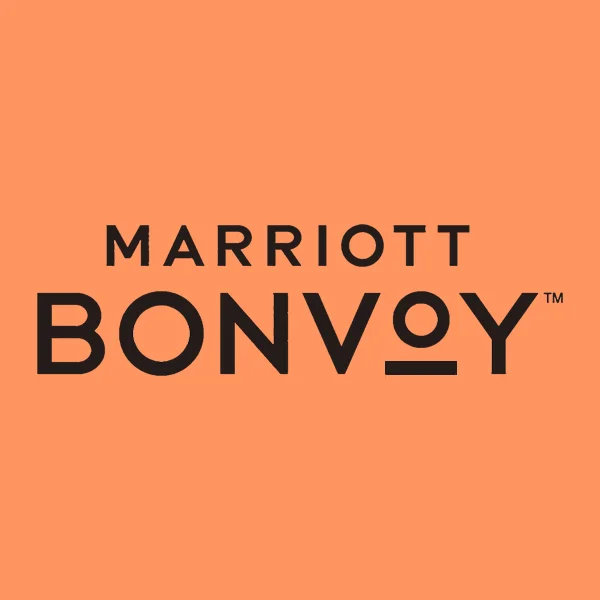
The points could be used however the winner wanted. For example, they could take a long weekend at the stunning W Algarve® including flights, or spend them on a family holiday at the Marriott Resort Palm Jumeirah in Dubai, or for a road trip across the UK or Europe with Moxy Hotels to explore cultural cities such as Bordeaux, Bergen, Brussels or Bristol. The winner could even use them for Marriott Bonvoy Moments – such as a private cooking masterclass with a Michelin Star Chef, a meet & greet with their favourite sports star or celebrity, or VIP access to sports and music events.
This is a great example of a mutually beneficial partnership for both brands – Marriott Bonvoy could attract thousands of new members to its programme and Vodafone could give its customers the chance to win an exciting prize.
2. Retention/Loyalty Partnerships and Partner Rewards
“Partnerships designed to retain and engage existing and lapsed members. Focused on capturing their attention and offering them rewards and benefits they love and that keep them loyal.”
Retention/Loyalty Partnerships are where a loyalty programme works with another brand, or even another loyalty programme, to offer its members partner rewards and benefits from partner brands.
These often complement the rewards and benefits that the brand can offer from its own products and services.
Partner Rewards are a great way to offer your loyal customers rewards and benefits they really value from other brands they love to shop with.
There are 3 main reasons that it makes sense to offer partner rewards for your members:
- They add relevance, excitement and appeal to your reward portfolio. Offering brand partner rewards enables a programme to deliver rewards that are really relevant to their member base, outside of their own category and transactional moments. For example, a utility company could offer its members exciting cinema trips or a movie to watch at home on a cold night.
- They add value. By creating mutually beneficial partnerships you can negotiate higher value rewards for your members at lower cost than offering rewards from your own products and services. For example, Tesco Clubcard offers its members partner rewards that are worth twice as much as if the member redeems the Tesco Clubcard points in store.
- They add variety and topicality to the rewards offered. By working with brand partners you can tap into new audience passions or key moments in the seasonal and retail calendar. For example, at Christmas you could work with a gifting specialist brand partner like Not on The High Street to offer your members thoughtful Christmas presents, or if you wanted to tap into a particular wellbeing passion, you could work with a trainer retailer like JD Sports or a fitness brand like Hussle to develop a compelling wellbeing reward for your members.
There are thousands of great examples of retention and loyalty partnerships and partner rewards offered by loyalty programmes. Here are 3 of my favourites…
Tesco Clubcard Partner Rewards is a highly developed and carefully selected suite of over 100 partner rewards, designed specifically for Tesco Clubcard Members.
Members can exchange their points for double the value with brand partners across multiple categories – from eating out, to home essentials, to lifestyle, to days out and entertainment and even travel and holidays.
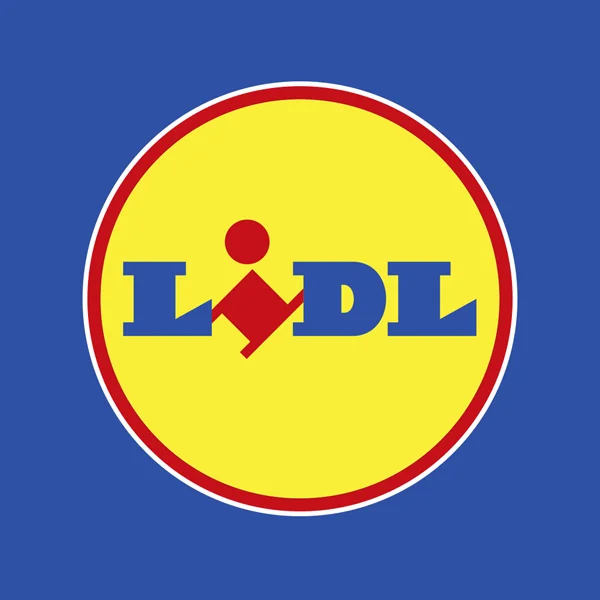
Lidl Plus Partner Rewards offer Lidl Plus members exclusive discounts and benefits from brand partners.
As Lidl puts it “that’s what friends are for.”
Lidl Plus members get the chance to enter competitions to win prizes like holidays from Loveholidays and they also get exclusive offers and benefits – such as 2 months’ free digital magazine subscriptions from Readly, 15% off airport parking with APH and up to 40% off cinema tickets with the Cinema Society.
MyJohnLewis offers its member “rewarding little moments” with personalised offers, exclusive early access to new launches, rewards for recycling, member events and more.
Partner offers form a core part of the programme and members can enter competitions to win prizes, get offers and exclusive benefits.
The Beautycycle partner initiative is particularly interesting – members can recycle their beauty products with John Lewis and earn £5 off £20 vouchers to spend in store and support causes like the building of the playground at the NHS Becton Centre, using recycled materials.
3. Promotional Partnerships and Partner Prizes
“Partnerships designed for attitudinal and behavioural shifts in members over a short and fixed period of time. Usually focused on key seasonal moments or behavioural milestones.”
Promotional partnerships are a very common means to drive loyalty, and also utilised in broader marketing too. They occur where a brand wants to create a promotion with a big prize pool for its customers whereby brand partners offer discounted or sometimes even free prizes, in return for exposure and marketing support.
Here are 3 great examples:
Shell Go+ Spin to Win. Shell Go+ is Shell’s loyalty programme, where “good things happen when you Go+ it”.
The programme offers a number of member benefits and rewards and has a rich promotional calendar of activity too.
One of the biggest promotions offered is “Spin to Win”. When they purchase fuel, members can “spin to win” thousands of prizes from Shell and Shell partners – from John Lewis voucher, to free coffees to holidays.
Vodafone’s Elf and Seek promotion is a huge annual Christmas promotion offered by VeryMe Rewards from Vodafone.
Members play for the chance to win thousands of brilliant partner prizes – from trips to Lapland, to festive weekends away to Nintendo Switches, Amazon Gift cards and more.
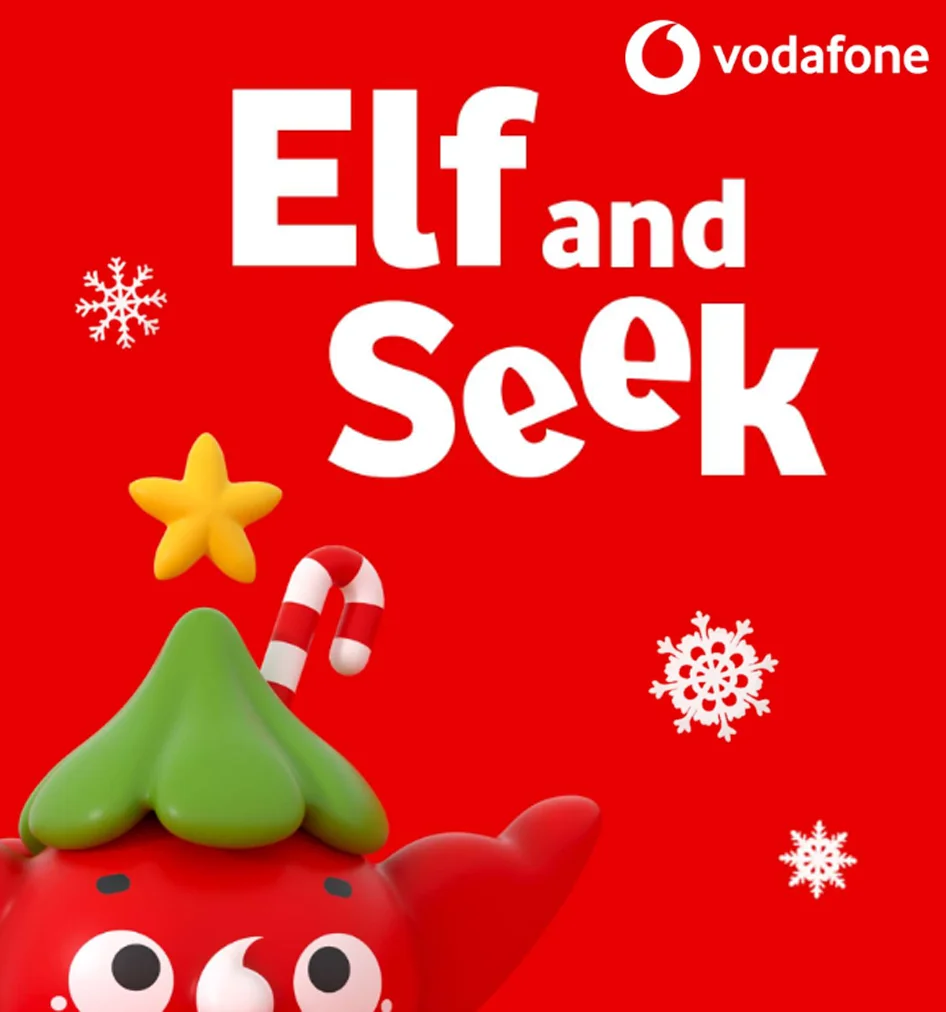
Caffe Nero’s “Little Blue Stamp Card” programme delivers a very successful Christmas Cracker promotion every Christmas.
It offers partner prizes such as Waitrose vouchers, Virgin Wine boxes, Samsung Galaxy watches from Vitality alongside Caffe Nero prizes such as drinks vouchers, bonus loyalty stamps and mince pies.
4. Innovation Partnerships
“Partnerships designed to make step change and address a new customer, business or brand need or opportunity. Achieving more by working together”.
Innovation partnerships are where two or more brands work together to achieve something new, something that they couldn’t do alone. There are lots of brilliant examples of these types of partnerships, almost too many to mention!
Here are a couple of my favourites:
British Airways Executive Club Wine Flyer Programme.
This is a unique programme for British Airways Executive Club Members, where they can use their Avios points to get the finest wines from all around the world, delivered through an exclusive innovation brand partnership with Laithwaites.
The financial services loyalty sector also has multiple fantastic innovation brand partnerships at play.
The most prevalent type is where a credit card provider partners with a desirable partner brand, to reward customers every time they spend.
IHG One Rewards credit cards are a great example of this, where customers earn points with every transaction.
The Travel Rewards Cards from Amex are another great example.
5. Sponsorship Partnerships
“Partnerships when a company commits money or resources to sponsor an event, individual or organisation and, in return, they get access to assets such as branding opportunities and the use of logos or talent”.
Sponsorship is a marketing discipline that is closely aligned to brand partnerships – the primary difference is that sponsorship comes with a price tag – a fixed investment in return for assets.
Companies tend to engage in sponsorship marketing with their Masterbrand and often the use of the assets from the loyalty programme is a key focus for the overall sponsorship agreement.
Some great examples of the use of sponsorship partnerships include:
Within a multi brand sponsorship strategy, Accor Live Limitless sponsor the ‘Mamma Mia! The Party’ experience in London.
As part of the overall sponsorship activity, Accor Live Limitless members get the chance to attend the experience, as well as receiving exclusive benefits and rewards.
Adidas have multiple very high profile sports’ sponsorships and as part of that overall activity, AdiClub members get the chance to meet the stars, win tickets to events and attend exclusive member experiences across the globe.
*New for 2024* The Co-Op are going to launch Co-Op Live – sponsoring The Arena, an exclusive new music-first arena – “Co-Op Live” in Manchester.
Co-Op members will get early access to tickets, exclusive benefits and the chance to win exclusive tickets and experiences.
6. Revenue Generating
“Partnerships designed to drive incremental revenue for a loyalty programme, by working collaboratively with brand partners.”
Revenue generating partnerships have become more popular in the last decade, as loyalty marketers face greater budget pressures and the need to offer even more value to members. There are many different ways that loyalty programmes seek to create incremental revenue streams.
The most dominant form is the use of a CPA (Cost per Acquisition) model or share of AVO (average order value) with brand partners – where, in return for exposure to a loyalty programme’s membership base and the acquisition of new customers, the brand partner will pay the programme owners a revenue stream per new customer acquired.
There are many examples in the market, but most programmes treat this information confidentially.
7. Corporate Social Responsibility (CSR) Partnerships
“Partnerships designed to support corporate social responsibility objectives, usually designed to help people, charities or the planet.”
Corporate Social Responsibility partnerships have become very popular in loyalty circles, as brands and people focus increasingly more on society and the planet. Members want them, businesses support them and society demands them.
The most popular form of CSR partnership in loyalty is where a programme supports a charity – either directly or by enabling its members to donate to or support the charity in question.
A couple of great examples include:
Where members can support animal charities of their choice every time they shop – to date members have raised over £10million pounds.
Virgin Red supports a number of charities from Air Ambulances UK to the UN Refugee Agency, by allowing members to donate their points to good causes.
This is then overlaid with additional activities to support the charity – for example, Virgin Red recently ran a promotion where new members could donate 1,000 Virgin Points to their favourite charity when they joined the programme.
8. Coalition Partnerships
“Partnerships where two or more brands work together to build a shared loyalty initiative.”
Coalition Partnerships in loyalty can be found across the globe and they tend to include a combination of 2 or more non-competitive brands from multiple sectors – most commonly a grocery partner, a travel partner, a retail partner and/or a fuel partner.
There are many advantages to coalition loyalty, including shared assets, reach and capabilities – but there are also challenges to coalition programmes including ownership of data, control and collaboration.
A couple of famous examples of coalition partnerships include:
Nectar offers its members little shopping rewards every day, and is a coalition programme offered by Sainsbury’s, Argos, eBay and Esso.
Members earn points across all the coalition partners and by shopping online and can then redeem them across those partners and thousands more reward partners from The Woodland Trust to Caffe Nero to Vue to Eurostar.
Flying Blue is the coalition loyalty programme of Air France, KLM and Transavia.
Members earn miles during their trips or when purchasing services from non-airline partners such as hotels, car rental and complementary travel services.
5 Top Tips
We love brand partnerships at Mando-Connect and hope this blog has inspired you to find out more!
So, I’d like to leave you with 5 actionable tips you can use when designing and your brand partnerships strategy:
- Aim High – brand partnerships can help you achieve more for less, so don’t be constrained by the realities of what you could achieve if you were going it solo. Think big!
- Think Mutual – brand partnerships are about mutual gain and seizing shared opportunities. So make sure you approach them with mutual benefit in mind. As well as asking “what’s in it for me?” make sure you think about “what’s in it for them?”
- Focus on The Brands Your Customers Love – successful brand partnerships are a science as well as an art. Make sure your starting point is a deep understanding of your audience and the brands they love and shop with. Not the ones that you personally do.
- Collaborate – team work makes the dream work. Genuine collaboration, discussion and compromise is essential for a successful brand partnership to work.
- Ask the Experts – forging memorable brand partnerships isn’t easy. There is a whole industry of experts out there, make sure you involve them to make sure you get partnerships right.
Brand Partnerships 101 Worksheet
Everything you need to develop an unmissable brand partnership your customers will love in one handy bite-sized document.
How Mando-Connect Can Help You
Brand Partnerships are an essential part of every loyalty marketer’s toolkit – helping you win hearts, change behaviours and drive significant value. By working together with other brands you can achieve so much more than you can alone.
If you are keen to find out more please get in touch and find out how brand partnerships can help you achieve your objectives.


